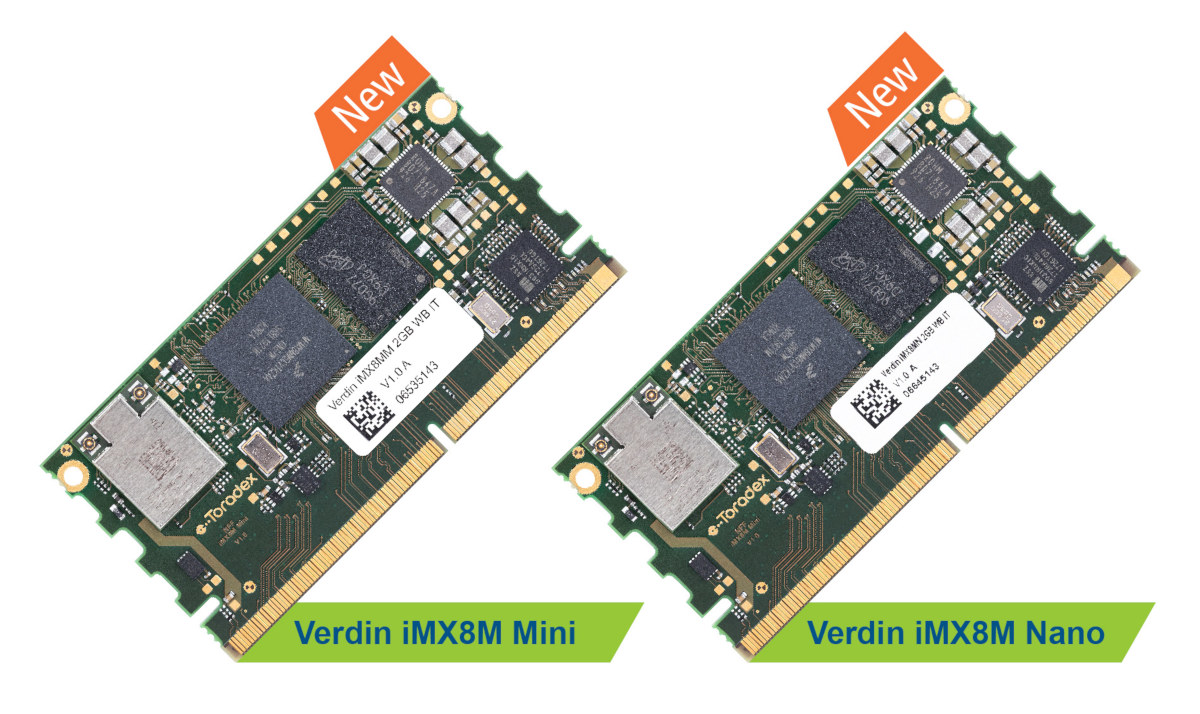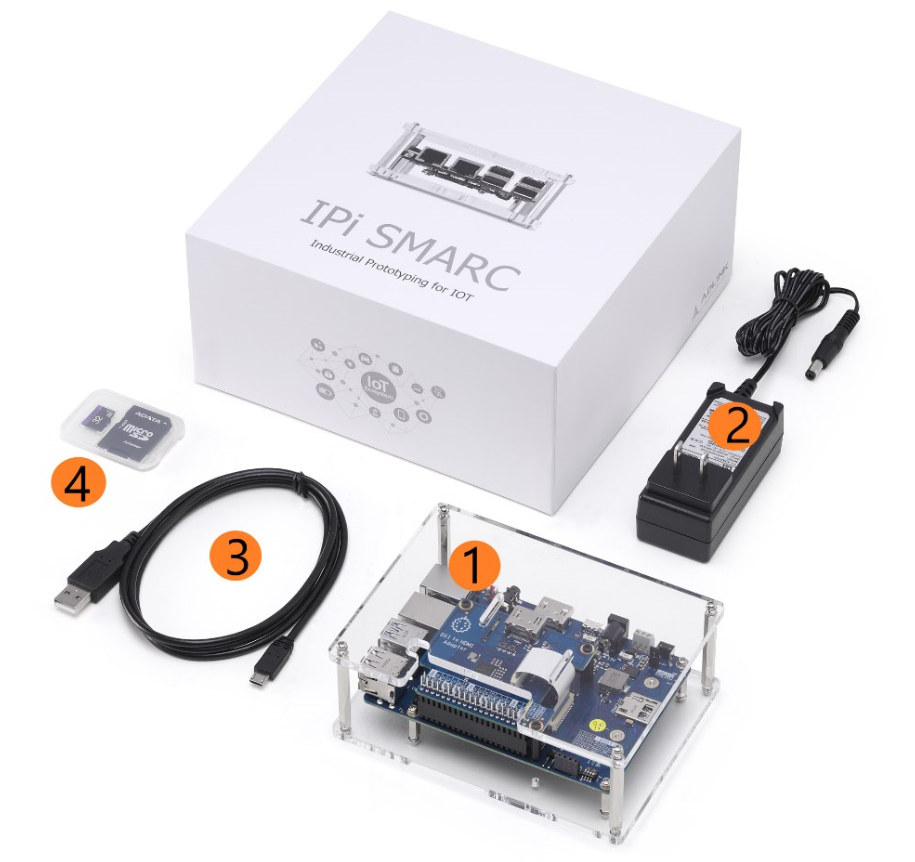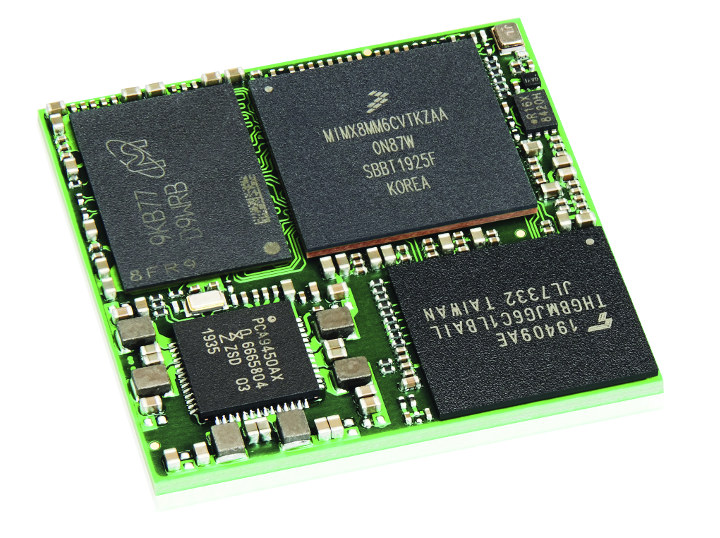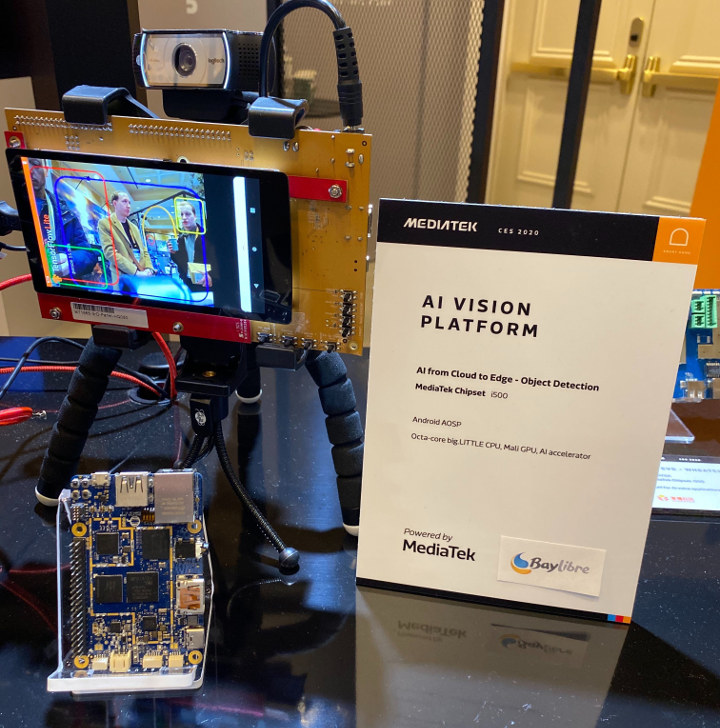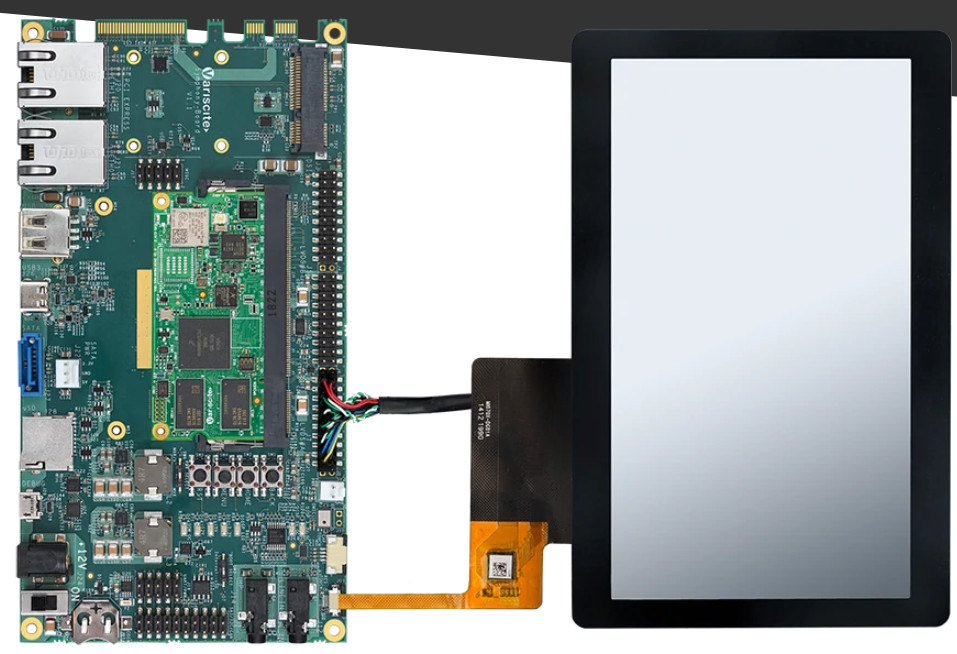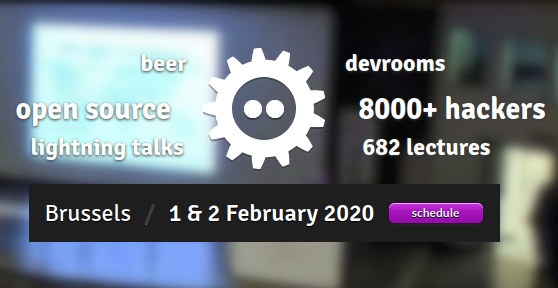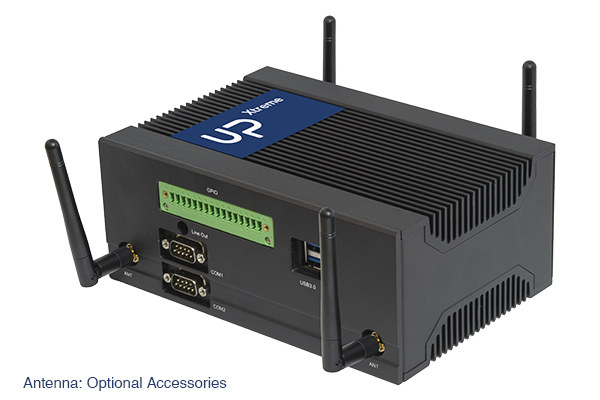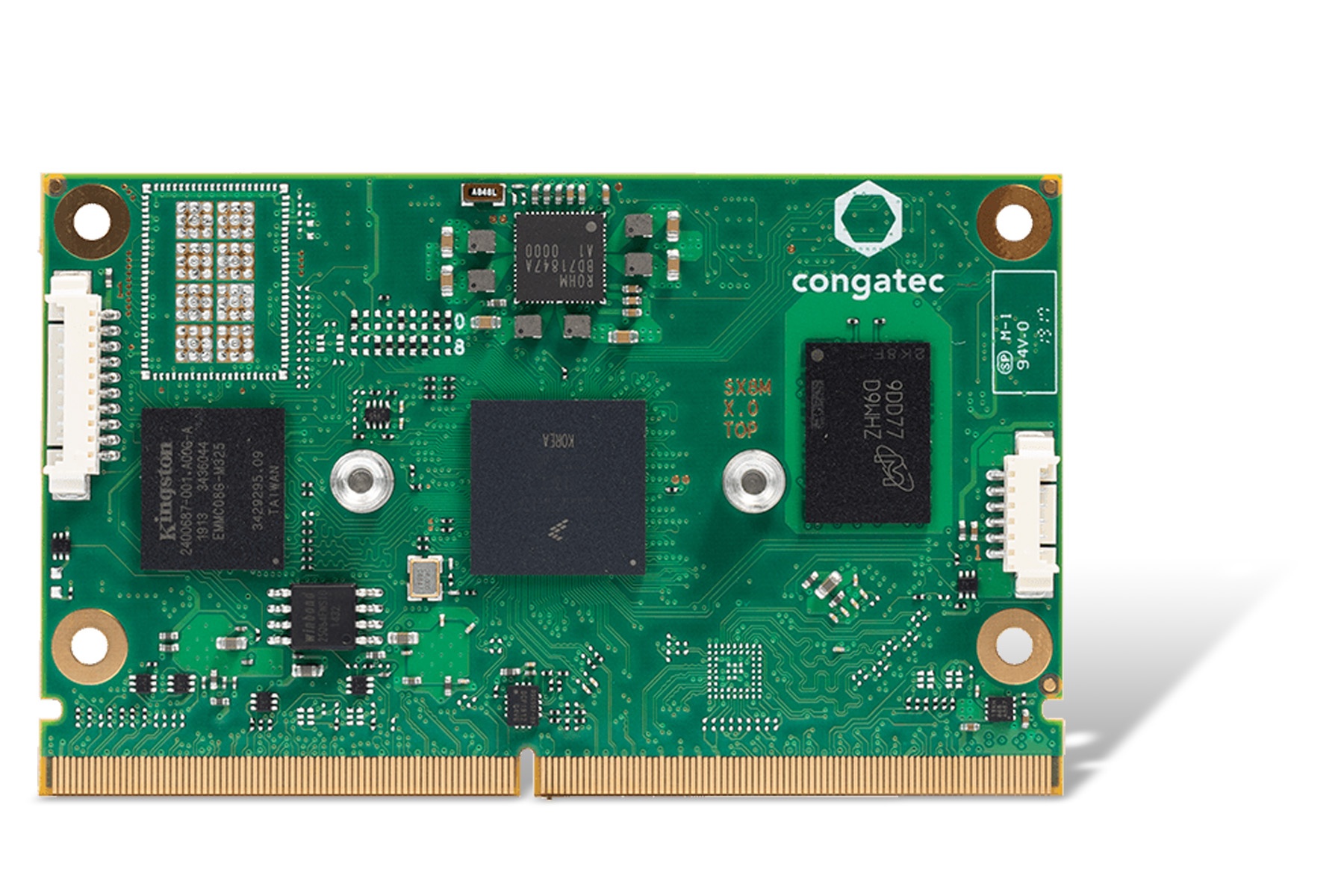So far, Toradex had two Arm-based system-on-module families with the smaller, lower-power Colibri and more powerful Apalis modules. The Colibri form factor was first defined in 2005, and the company is still maintaining it, but since then new interfaces have emerged, so Toradex has now designed a new low-power module family called Verdin. Toradex Verdin modules offer more I/Os with a 260-pin edge connector, include a battery-ready design with a wide input voltage range (3.3 to 5V), low power 1.8V IOs, the ability to easily extend power management to carrier board peripherals, and off-the-shelf thermal solutions. The modules are also tested for EMC, shock and vibration tolerance, and “Toradex Direct Breakout” is said to simplify signal routing on carrier boards as high speed, impedance critical signals are routed from the source IC to the edge connector on the Verdin module in such a ways to limit complexity on the carrier […]
ADLINK Industrial-Pi (I-Pi) SMARC Development Kit Features Rockchip PX30 SoC
ADLINK Technology has just announced the Industrial-Pi (I-Pi) SMARC Development Kit to help engineers quickly design prototypes for industrial applications using peripherals and sensors. The I-Pi SMARC development kit is comprised of a baseboard, LEC-PX30 SMARC-compliant Rockchip PX30 system-on-module, an acrylic case, a 12V/2A power supply, USB cable, and a 32GB MicroSD card. The company promotes the kit as “an industrial-ready substitute for Arduino and Raspberry Pi (RPi) platforms that are commonly used for prototyping but cannot typically be ‘dropped’ into an industrial solution as-is“. LEC-PX30 SMARC System-on-Module Specifications: SoC – Rockchip PX30 Quad-core Arm Cortex-A35 CPU with TrustZone technology, ARMv8 Cryptography Extensions, Mali-G31 GPU System Memory – 1GB or 2GB DDR3L at 1066/1333 MHz Storage – 8, 16, 32 or 64 GB eMMC flash Connectivity – 10/100M Ethernet from SoC, 10/100M Ethernet via LAN9514 USB 2.0 Ethernet controller Video Decoding – H.264 up to 1080p60, H.265/HEVC up to 1080p60, […]
Kontron Launches the Smallest i.MX 8M Mini Module with 30x30mm Form Factor
Introduced in 2018, NXP i.MX 8M Mini is the first i.MX processor from the company manufactured with a 14nm process, and the low-power processor is found in several compact modules such as Variscite VAR-SOM-MX8M-MINI (38×28 mm), SolidRun i.MX 8M Mini SoM (47×30 mm), or Compulab UCM-iMX8M-Mini (38×28 mm). The smallest i.MX 8M Mini module we’ve covered so far is TechNexion XORE-IMX8M-Mini LGA system-on-module that takes just 30×30 mm of space. The TechNexion module is now joined by Kontron SoM SL i.MX8M Mini module with the same 30x30mm form factor, but a few more pins (267 vs 225). Kontron SoM SL i.MX8M Mini specifications: SoC – NXP i.MX 8M Mini quad-core Arm Cortex-A53 processor @ 1.6 GHz with one Arm Cortex-M4 real-time core @ 400 MHz, as well as 2D GPU and 3D GPU System Memory – 1GB LPDDR4 RAM (option up to 4GB) Storage – 8GB eMMC flash (option up […]
MediaTek Rich IoT SDK v20.0 Released, Pumpkin i500 SBC Announced
MediaTek Rich IoT SDK v20.0 is Available MediaTek has announced its Rich IoT SDK v20.0 is already available for the i300 and i500 chipset series. The SDK was developed in collaboration with BayLibre, the French developer of Linux and Android embedded systems software, which is also known for helping mainlining Amlogic processors to Linux. The i300A, i300B, and i500 hardware platforms are supported and the features are focused on IoT and the emerging generation of smart devices. Supported OS’es and Test Applications The Rich IoT SDK v20.0 supports Yocto 3.0 Linux and Android 10 to let third-party customers and members of the MediaTek Ecosystem test Computer Vision algorithms, AI models and custom software on top of the base layer. Updates and Maintenance The SDK is receiving updates quarterly, with security updates and patches being delivered over-the-air (OTA) on a regular basis. The chipset series has a timeline for updates to […]
Variscite Introduces i.MX 8M Mini and Nano SoM’s, Symphony Carrier Board
NXP i.MX 8M Mini and i.MX 8M Nano are lower cost and lower power variants of NXP i.M 8M processors manufactured using a 14nm FinFET process, and cutting some features such as HDMI and embedded DisplayPort, or hardware video decoder. NXP i.MX 8M Mini has been announced for over two years, so we’ve already written about many boards and systems-on-module (SoM) including Boardcon EM-IMX8M-MINI SBC, TechNexion XORE LGA SoM, or Congatec conga-SMX8-Mini SMARC 2.0 module among others. NXP i.MX 8M Nano is more recent, and we only covered a few announcements so far namely iWave Systems iW-RainboW-G34M-SM SoM and Conga-SMX8-Nano SMARC 2.0 computer-on-module. There’s now at least a third company working on a “Nano” module with Variscite announcing VAR-SOM-MX8M-NANO SoM together with a “Mini” version called VAR-SOM-MX8M-MINI, and Symphony carrier board and development kits. VAR-SOM-MX8M-MINI & VAR-SOM-MX8M-NANO Modules Both modules are part of Variscite VAR-SOM Pin2Pin family, and share the […]
Some Interesting Talks from FOSDEM 2020 Schedule
We wrote about IoT devroom call for proposals for FOSDEM 2020 a little while ago, and as the free open-source developer meetup is getting closer, FOSDEM 2020 organizers released the schedule. So I’ll look at some of the talks in the relevant devrooms such as the Internet of Things, hardware enablement, Embedded, Mobile and Automotive, as well as RISC-V and others to compose my own little virtual schedule for the 2-day event. Saturday, February 1 10:30 – 10:50 – How lowRISC made its Ibex RISC-V CPU core faster – Using open source tools to improve an open-source core – by Greg Chadwick Ibex implements RISC-V 32-bit I/E MC M-Mode, U-Mode, and PMP. It uses an in-order 2 stage pipe and is best suited for area and power-sensitive rather than high-performance applications. However, there is scope for meaningful performance gains without major impact to power or area. This talk describes work […]
UP Xtreme Edge (UPX-Edge) Embedded Computer is Built around UP Xtreme Whiskey Lake SBC
AAEON UP Xtreme SBC was launched last June with a choice of 15W Whiskey Lake processors, namely Intel Celeron 4305UE dual-core processor, Intel Core i3-8145UE dual-core 4-thread processor, Intel Core i5-8365UE / Core i7-8665UE quad-core 8-thread processors. The company has now launched a complete embedded computer built around UP Xtreme SBC named UP Xtreme Edge Computing System, or simply UPX-Edge for short, that’s a slight variation of the fanless chassis offered for the SBC during the Kickstarter campaign. UPX-Edge specifications: SoC (one or the other) Intel Celeron 4305UE dual-core processor @ up to 2.2 GHz with 2MB cache, Intel UHD 610 graphics Intel Core i3-8145UE dual-core 4-thread processor @ up to 2.1 GHz / 3.9 GHz (Turbo) with 4MB cache, Intel UHD 620 graphics Intel Core i5-8365UE quad-core 8-thread processor @ up to 1.6 GHz / 4.1 GHz (Turbo) with 6MB cache, Intel UHD 620 graphics Intel Core i7-8665UE quad-core […]
Congatec Conga-SMX8-Nano SMARC 2.0 CoM Features NXP i.MX 8M Nano Processor
Congatec Announces Ultra-Low-Power SMARC 2.0 CoM Congatec has come out with a new CoM, the Conga-SMX8-Nano that carries up to 4x ARM Cortex-A53 and 1x Cortex-M7 cores with a full spectrum of options. The SMARC 2.0 module can meet ultra-low-power requirements, offers low cost, as well as high-level performance. Background Information Background on NXP i.MX 8M Nano processors and modules have been reported in our report about iWave’s iW-RainboW-G34M-SM SoM and the introduction of the i.MX 8M Nano ARM Cortex-A53 and M7 processor to the market. A Board for the Industry The intention here is to develop a board that has high performance, ultra-low power requirements and can reach high volumes at low cost. The modules are scalable to the conga-SMX-8-Mini CoM, with options for a multitude of setups across types. Example Uses for conga-SMX8-Nano The company offers the example of a complex medical user interface that engineers might want […]


